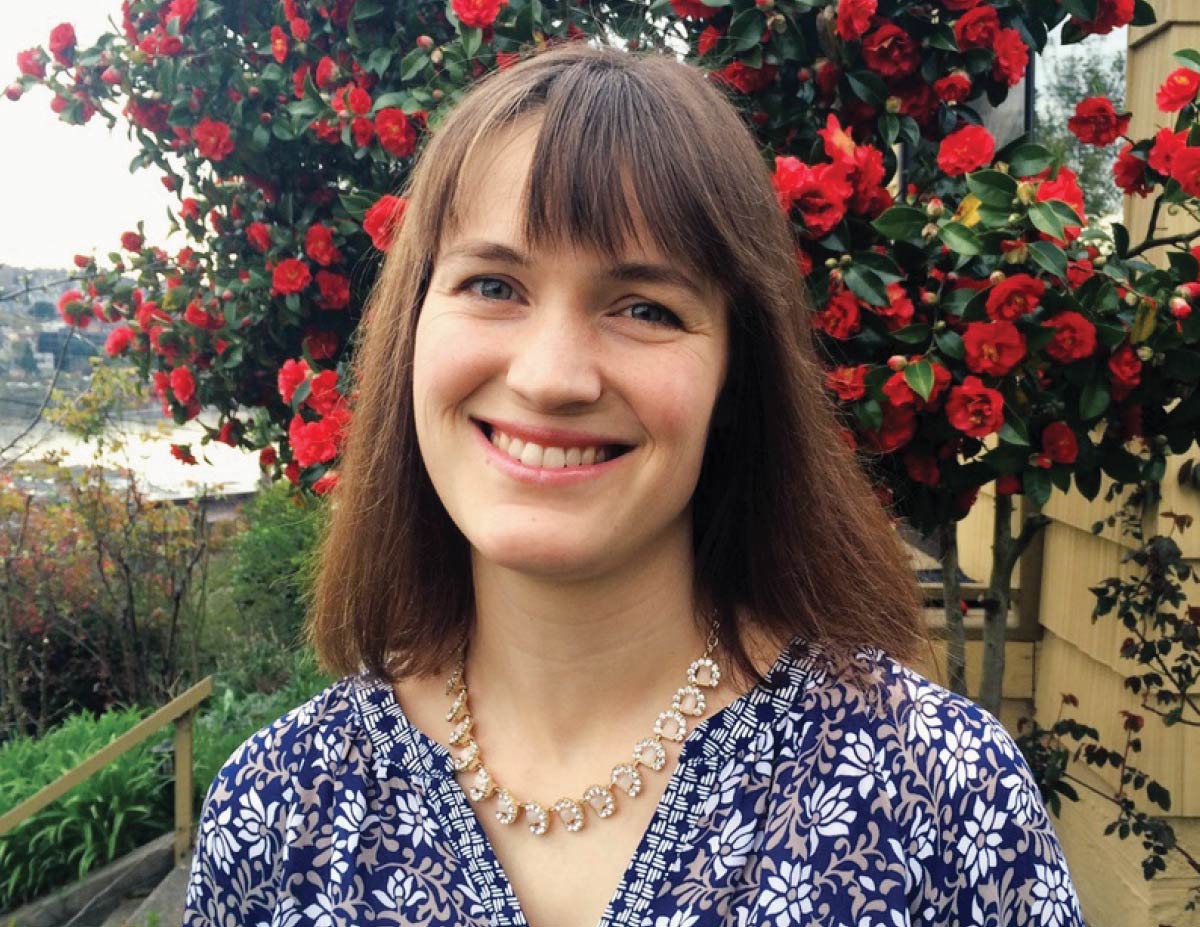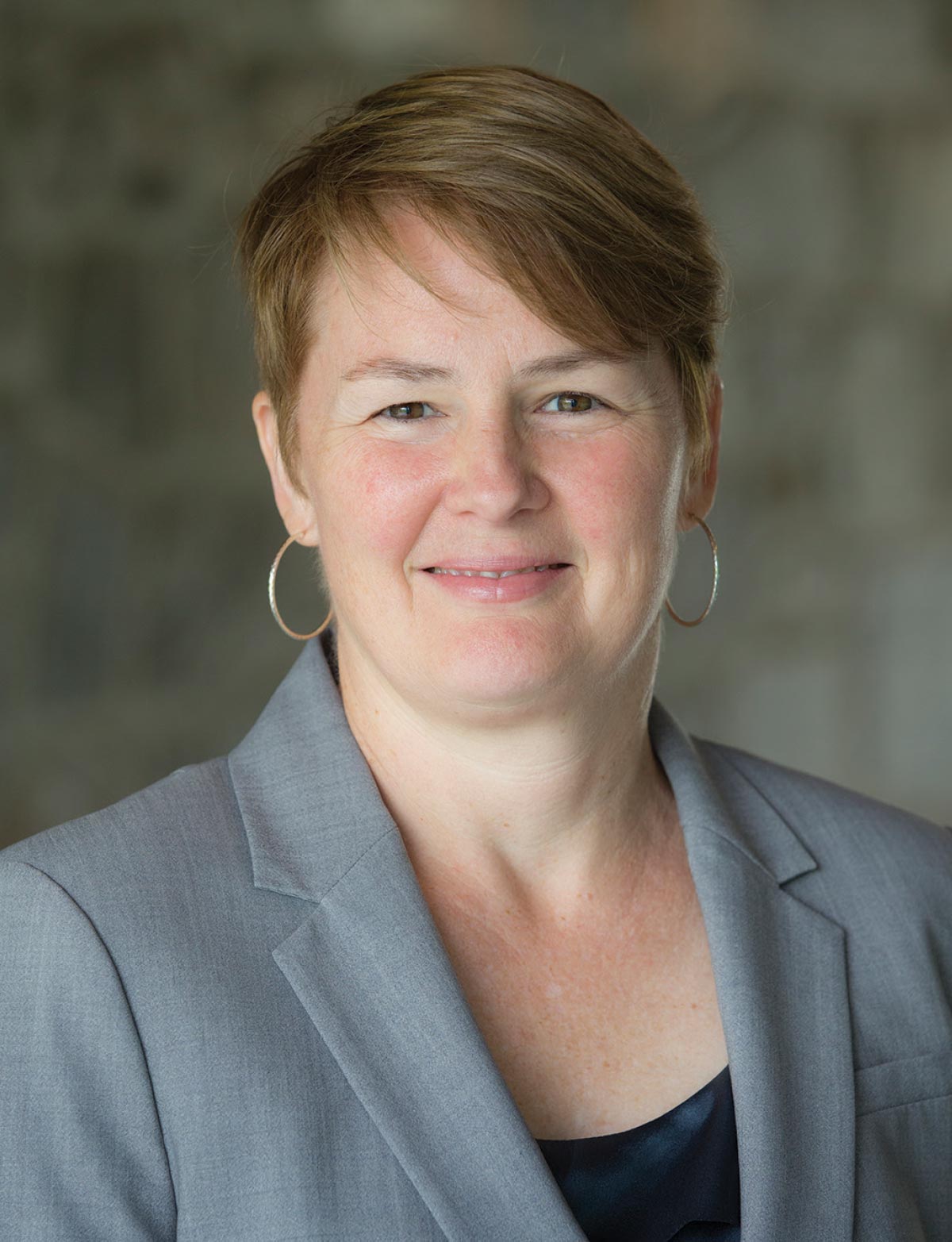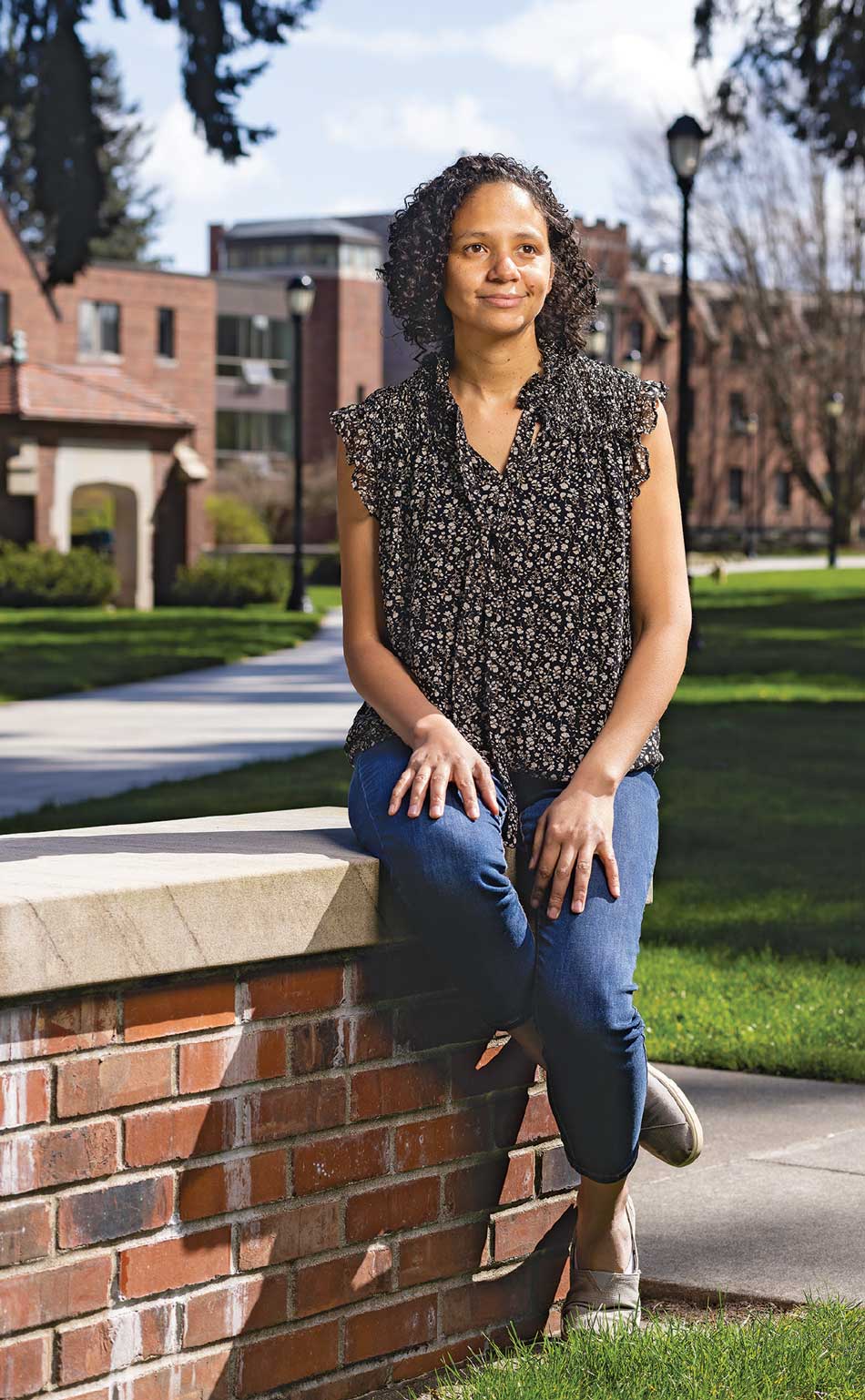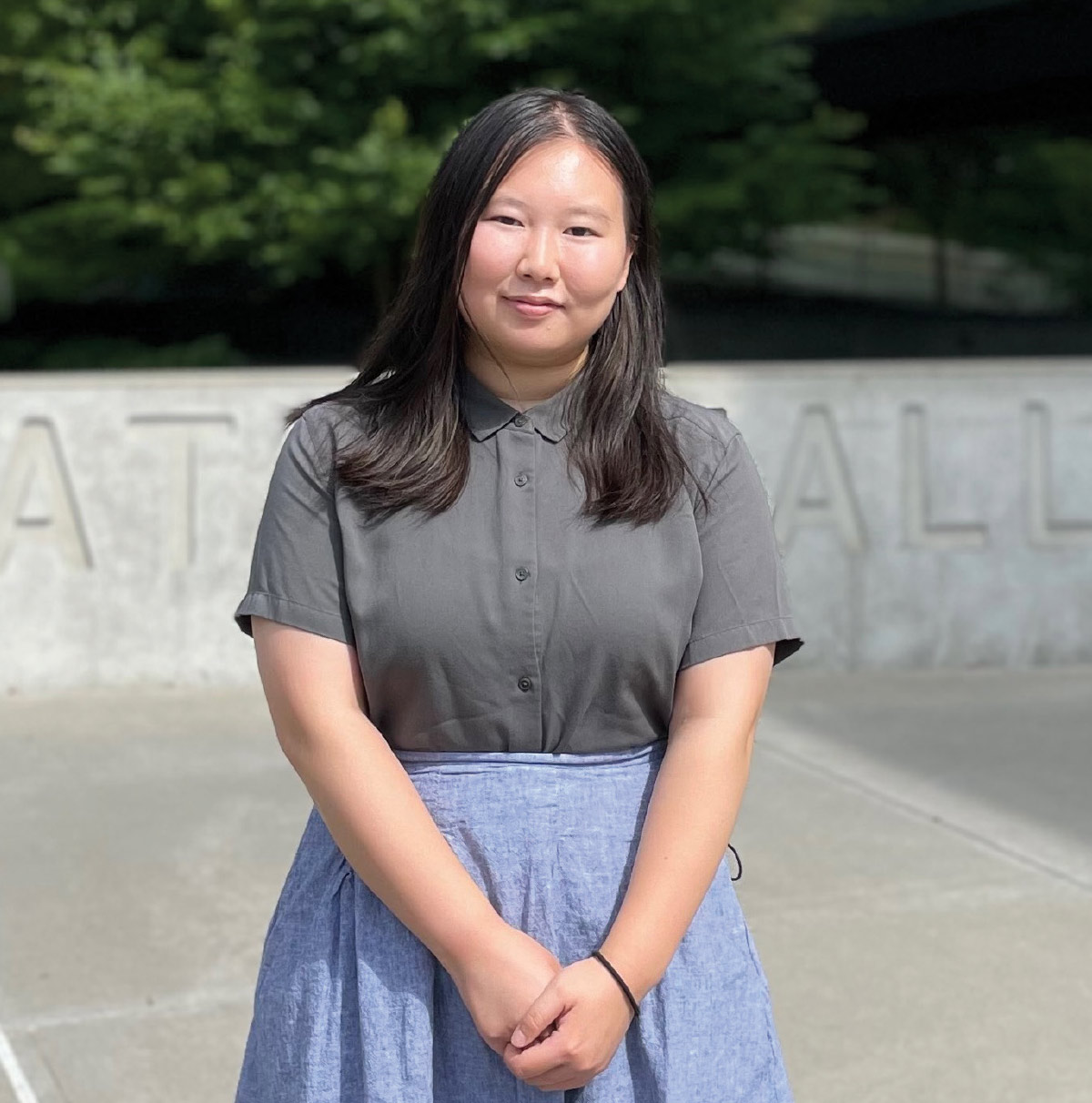
Breaking the Code
the


Breaking the Code
the


all Jessica Berg ’20 the accidental computer scientist.
“I took it as an elective in high school, mainly because it was the most interesting out of a bunch of choices I didn’t find interesting at all,” says Berg, now a computer science Ph.D. student at New York University. “But I found that I really enjoyed it.”
She came to Swarthmore focused on computer science, and found the introductory courses welcoming. From peer mentorship programs to the direct access to faculty, support abounded.
“You were never struggling alone,” Berg says. “There were always people eager to help you, as long as you were willing to learn.”
Unlike in her systems courses at NYU, in which she might only see one other female student, Berg experienced gender parity at Swarthmore: both classmates and faculty in leadership positions.
“There can be a weird undercurrent of computer science being just for men,” she says, “but Swarthmore was good about stamping that out.”
As important — and rare for undergraduates elsewhere — were opportunities to do research with faculty. Berg collaborated with Kevin Webb, associate professor and chair of computer science, on a networking project, then worked with Lisa Meeden, professor of computer science, and Daniel Grodner, associate professor of psychology and cognitive science, for her thesis.
“It was really lovely to get to do interdisciplinary research, taking the perspectives of people from different fields to solve a problem,” she says. “Now that I’m in grad school, I realize how special that was.”

“I’m mostly in the mode of career exploration,” she says. “‘My experiences at Swat prepared me well to independently explore different career paths.”
While Berg’s experience is not unusual for Swarthmore, it breaks from larger trends for female students in computer science across North America.
A recent survey from the Computer Research Association cited how much better-represented women are in computer science at Swarthmore than at other schools. While the average school confers only 18% of its computer science degrees on women, Swarthmore has roughly doubled that number in recent years.
Student collaboration is paramount, including the “Ninjas” program and the Women in Computer Science club. Faculty members are intentional about building a culture of inclusivity.
Yet, misperceptions persist.
“We have a lot of students, particularly women, who might think ‘Computer science isn’t for me,’ because of preconceived notions,” says Webb, who became chair of computer science in July. “It’s an ongoing effort to change that narrative.”
It helps for students to see alumni thriving in the field. Among them: Heather Jones ’06, a senior project scientist at the Robotics Institute of Carnegie Mellon University, after working at NASA; Jenny Barry ’07, a senior roboticist with Boston Dynamics; and Rebecca Roelofs ’13, a research scientist at Google.
Most impactful, though, is faculty representation. For more than 20 years, the computer science department at Swarthmore has had women in leadership positions, providing female students both the technical skills required and the implicit message that they belong; that there’s a place for them.


A Windy, Twisty Path
Medero came to Swarthmore intent on majoring in computer science, but at the urging of her mother, explored other interests that might prove complementary.
“She felt it was a great set of tools to have,” says Medero, who also majored in linguistics and now collaborates with an interdisciplinary team to help address air pollution in local communities. “My path since then has been very windy and twisty,” she adds, “but I’m really thankful for that.”
Medero parlayed her interdisciplinary experiences at Swarthmore, including her first exposure to natural language processing with Rich Wicentowski, professor of computer science, into a research programming job at the Linguistic Data Consortium at University of Pennsylvania. Then she spent time as a stay-at-home mom, before earning a Ph.D. in electrical engineering from the University of Washington.

That collaboration recalls Medero’s own experience at Swarthmore, where faculty encouraged her to stay on campus one summer for a computer vision research project.
“That was huge for me in terms of building an identity as someone who could handle that type of work,” says Medero, also pointing to the College’s Honors program as a formative experience. She remembers being struck that there only one or two other women in upper-level computer science classes. But with two of three full-time faculty, Tia Newhall, centennial professor of computer science, and Meeden, being women, “there was no feeling of this not being something that females can do.”
“There are still representation imbalances in computer science, and plenty of things to be done about it,” Medero adds. “Having greater representation in the faculty is one of the most impactful things that colleges can do to create an inclusive environment for students of different identities.”
Understanding the Struggle
The first was her education professor reading from Computers in the Classroom in one of her first classes at Swarthmore.
“It sounded like the kind of hands-on teaching that I wanted to do,” says Chambers, assistant professor of computer science at the University of Puget Sound.
Then she failed the midterm for her first computer science course — and was asked to become a computer science tutor.
“Because I understood what it was like to struggle,” she says.
Chambers steadily improved in her computer science classes and became a teaching assistant, which deepened her connection to the department. She grew closer to her professors and got to do research with Newhall.
“I feel lucky to have gotten through four years not weighed down by larger dynamics,” she says.
Equipped with a strong technical background, she went to work on a project based on machine learning, along the lines of artificial intelligence, at Pomona College. She became fascinated with neural networks, which prompted her to enroll in the computer science graduate program at the University of California, Irvine.
These days, Chambers studies how computers interpret text and teaches her students how to build algorithms that can comprehend written language. She teamed up with a student with a classics background to train a neural network to write Homeric poetry by having it read 27,000 lines of The Odyssey and The Iliad. They published their research for a conference on artificial intelligence.
Still, it’s the act of teaching that motivates Chambers — the call for creativity and leadership, its challenges and rewards. When her students presented their senior projects this May, Chambers beamed with pride.
“Getting to see students having fun, making progress, and publishing papers on topics that can connect with people has been so great,” she says. “For the foreseeable future, I’m right where I want to be.”

Computer Science Department Shines in National Ranking
What accounts for these measures of success? “I think we have a good culture in this department,” says Kevin Webb, associate professor and department chair. “Our faculty is very accessible, which really helps students to feel like there’s someone there who can both help with that tricky technical problem and just kind of be there to talk and support them.”
Faculty foster collaboration among the students, while providing the strong fundamentals that students learn at other top computer science and engineering schools. They keep close tabs on the computer science education field, in addition to their interest research areas. But another key is that Swarthmore students tend to have a wider array of interests than students at other highly ranked computer science and/or engineering schools, with many double-majoring in subjects such as math or art history, linguistics or classics. “Those are perspectives a lot of other places don’t have,” says Webb. “Being able to work well in teams and communicate effectively goes a long way toward getting hired and ultimately being productive in this field.”
The department has also made “socially conscious computing” a point of emphasis, says Webb, pointing to the collaboration between Krista Thomason, associate professor of philosophy, and Ameet Soni, associate professor of computer science, on the ethics of artificial intelligence, as well as a grant Swarthmore received from the National Humanities Center to develop a course on responsible AI.

A Zeal for Coding Languages
It was love at first study, but still Yorihiro felt a sense of imposter syndrome — not as a woman in a field perceived to be male-dominated, but as a newbie. “It just seemed like everyone else was an expert, and that I was just starting out,” she says. “But I was lucky to have classmates and professors telling me, ‘No, you’re actually good at this.’” Yorihiro’s confidence grew. Then, her zeal for a programming languages theory course taught by Zach Palmer, assistant professor of computer science, resulted in an opportunity to collaborate with him on related research.
“That was a special experience,” Yorihiro says. “I got to see what it takes to tackle an unsolved problem, and really be at the core of an entire research journey.”

“It’s thinking deeply about tools I can build to help programmers know their code isn’t doing something they weren’t intending,” she says.
Yorihiro herself feels secure these days, but not altogether rid of imposter syndrome; there are still moments of sensing that others are staking more of a claim. “I think we’re all still working on fostering an environment where people have the time and space to develop confidence,” she says. Yorihiro hopes to be on the front lines of that effort as a professor. It’s a chance to combine her interests in research and instruction, and to pay her own experience forward.
“I was so inspired by my professors at Swarthmore,” she says, “and would love to have that kind of impact on someone else.”